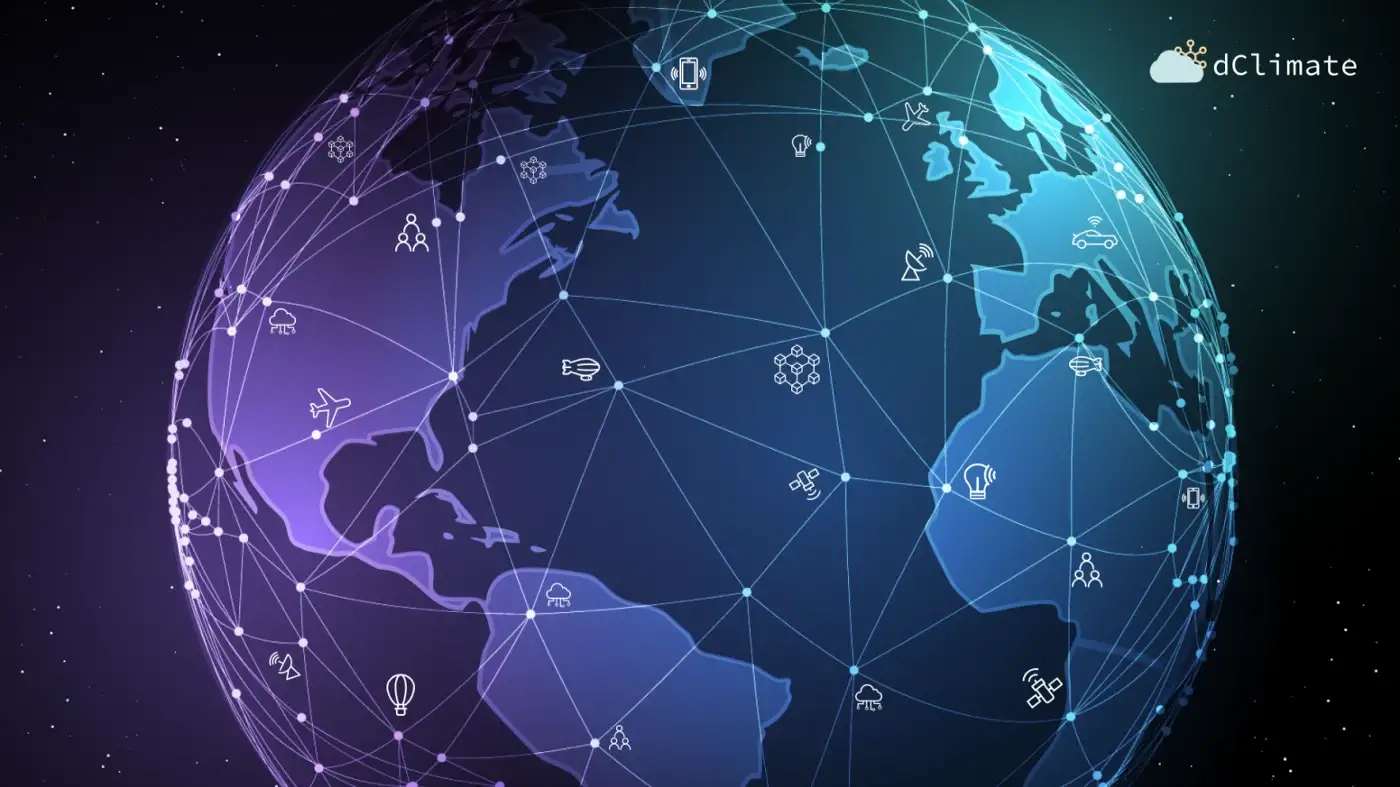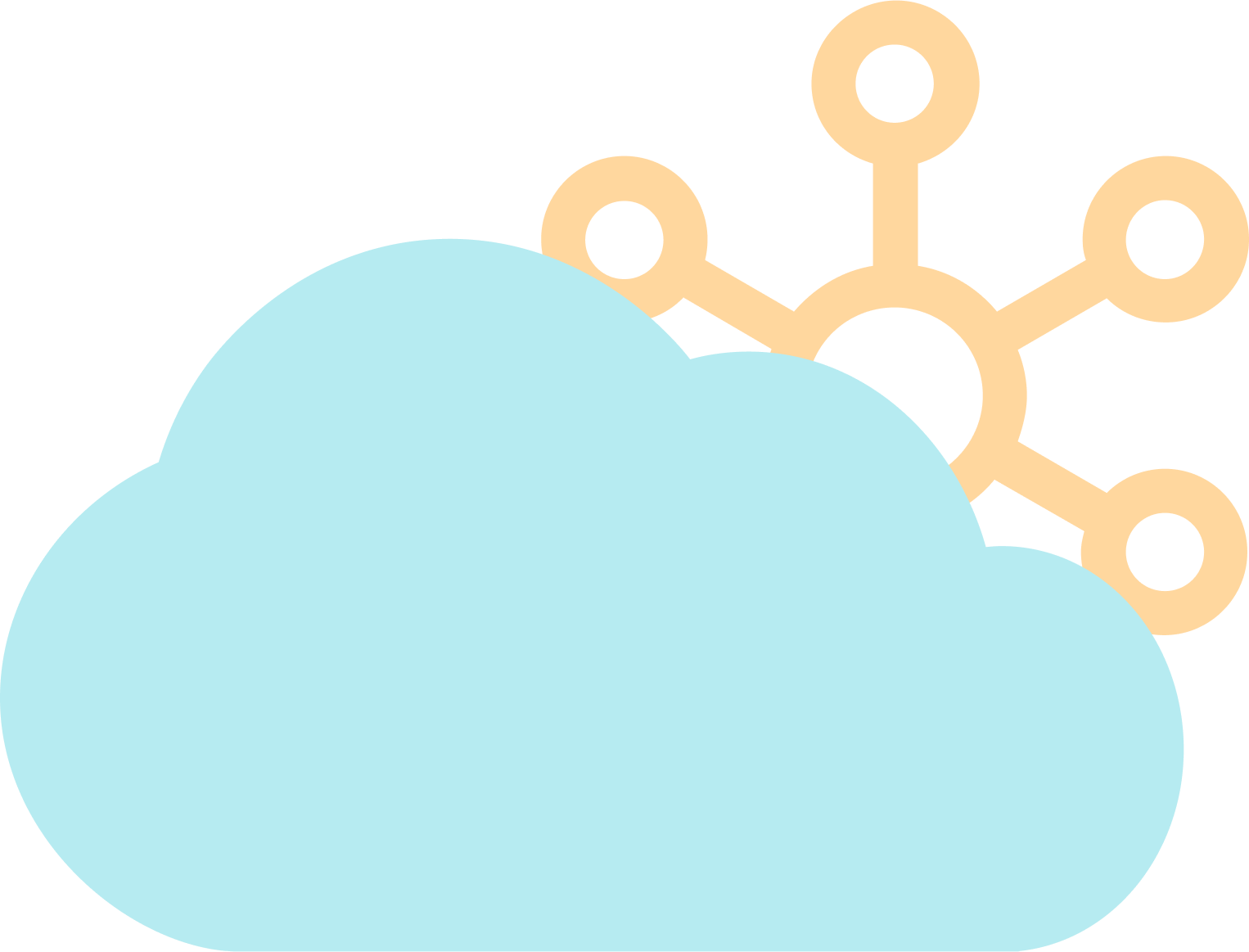Blockchain and Tokenization of Things vs Internet of Things (IoT): Significance to Climate Data

By Manavi Garg, dClimate Ambassador
Internet of Things (IoT) gained traction in the 2000s, with the dot com bubble acting as a catalyst in digital transformation, across all industries and transforming mechanisms in industries to be a part of a digital ecosystem for the last two decades. Innovation within the IoT ecosystem has had noteworthy impact on initiatives towards tackling climate change. To recap, IoT refers to an ecosystem consisting of any computing, digital or mechanical devices connected to the Internet which links these devices to other instruments connected to the Internet.
All “things” in the ecosystem share data about how they are used and the environment in which they are used. A “thing” in the IoT ecosystem can vary from self-driving cars or a smart microwave to a wearable fitness system or drones on farmland. Although IoT has enabled industries to evolve, brought the world to its current state of doing business, and enabled innovation to address climate change (e.g. through smart grids, LED lighting, farming monitoring etc.), the next wave of evolution through advanced technology such as blockchain is essential to further grow economies.
The easy part of this evolution is that IoT has established strong fundamentals upon which blockchain can be used to improve processes. Further, not only is blockchain an efficient vehicle for growth but also essential given the rate at which the Internet is evolving, for example, through the metaverse.
Internet of Things (IoT) — Application to Climate Data
Data Science and Big Data have rapidly emerged as one of the core mechanisms of collecting data and making data-driven decisions for climate related initiatives over the last decade. These mechanisms have enabled organizations to visualize important factors of the environment (such as data on water, energy and soil) and facilitate discussions on climate for both the public and policymakers. For example, satellite remote sensing and low-cost sensors have emerged as the latest ways to collect climate data on climate pollutants.
IoT has enabled innovation to develop technologies to collect climate data and initiate efforts such as Destination Earth by the European Commission or the Google Earth search engine that visualizes changes in the environment over time. These tools are making significant strides and allowing businesses, individuals and governments to understand changes in the ecosystem. In addition to data collection technologies, IoT has taken several forms such as sensor networks, net-zero carbon buildings and smart technologies relying less on disposable material.
My background isn’t in environmental science, so I won’t get into details of the type of data or technologies required to study the climate. However, as a FinTech professional, I understand that although IoT has established a strong base for collecting data and allowed the development of unique technologies to make data collection easier. Despite these developments, there exist many essential gaps around transparency, security and accessibility of data, within the existing IoT ecosystem, that still need to be resolved in order for both data producers to compile granular data and decision makers to effectively use that data.
Blockchain and Tokenization of Things — Application to Climate Data
By now, we have a good understanding of what IoT is (essentially the Internet as it is today, and all things connected to it). And we’ve all also heard the term blockchain, more so over the last year with crypto becoming mainstream during the pandemic and enabling finance* to become transparent and accessible to all. The mechanism behind this transparency and accessibility is blockchain and how it functions.
A major feature of blockchain is that it uses smart contracts and a consensus to validate transactions and information on-chain which is especially useful in monitoring, tracing and proofing processes and information — something IoT, as it is today without the blockchain, does not easily provide and relies on third-party involvement. Decentralization through a blockchain network eliminates the need for relying on a central platform while associating the value of physical objects to the network. These features are an efficient way to minimize numerous steps associated with data collection and validation, for example, through the use of smart contracts which can perform the requested task (see dClimate Whitepaper that explains the use of smart contracts in the data collection, validation and data use process). Not only is the blockchain technology itself useful but the capability of the network to allow anyone to participate and work towards a common goal is another very helpful feature, especially in the context of a global crisis that is climate change.
Several charity tokens have been developed for climate initiatives such as Save Planet Earth (SPE), Pangea Ocean Cleanup (POC) and World of Waves (WOW). Tokens are another added feature of blockchain to provide further incentives to the network to drive progress towards a common task. IoT today without blockchain does not provide a publicly available ecosystem that is accessible to all and provides incentives to the public to make important decisions about how a company or a cause is addressed — blockchain provides this capability and can be a key mechanism to address climate change.
IoT with Blockchain
For any business, government, individual or economy to progress, staying updated with the changes and latest tools available is essential for growth — combining blockchain with IoT is exactly that. With the help of added transparency, accessibility and security, and added incentives available to everyone through tokens, blockchain provides the next generation of tools which can help alleviate some challenges that currently exist, for example, with data collection and validation, bureaucracy, cross-border collaborations, supply chains, crowdfunding and fundraising — to name a few — all of which are important for working towards controlling the climate crisis. It is important to note that there are different blockchain platforms that can be used — including Ethereum, Ripple, Stellar and Oracle — depending on the requirement of the business or cause. I’ve always mentioned in my articles that for any new tools to be successfully implemented in an economy, both the public and private sector need to work together. The latest development in climate data collection at COP26, under which a United Nations Coalition Fund will improve collection of climate data to boost efforts for studying changes in the environment, are the type of collaborations essential for making progress in climate data collection. This could potentially fund the use of advanced technologies such as blockchain to improve processes and help accelerate efforts for addressing climate change.
About the author — Manavi Garg is a financial services professional with a background in working with FinTech companies to adapt digital assets, and other private and public sector companies to use technologies such as blockchain and automation to improve their strategy and operations. Manavi has a master’s degree in Economics and the focus of Manavi’s master’s thesis was understanding the relation between social media and its relation in driving cryptocurrency prices.

